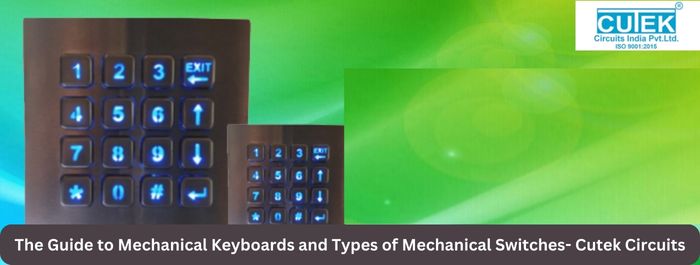The Complete Guide to Mechanical Keyboards and Different Mechanical Switch Types
Are you looking to employ mechanical keyboards in your organization? Then you need to know the essential aspects of mechanical keyboards to make an informed decision. So, you’ve reached the right place. This blog talks about mechanical boards and various types of mechanical switches to help you get a clear understanding of both.
What are Mechanical Keyboards?
A mechanical keyboard is a computer keyboard with spring-activated switches. These keyboards have become a popular choice across individuals and companies, as they serve the purpose better than the conventional membrane keyboard. In addition, mechanical keyboards are more durable, reliable, and consistent. Besides, they are aesthetically more attractive and can be customized to a particular requirement.
But what really forms the nucleus of mechanical keyboards is its switches. So, what is a mechanical switch and what are the various types of mechanical switches?
What is a Mechanical Switch?
A mechanical switch is a mechanism under the keys. It is fundamental to the keyboard’s success, user-friendliness, and durability. There are many parts that make up a mechanical switch. Let’s overview each to get a better understanding.
- Stem: The stem moves up and down when you press a key. The keycaps fit on the step’s top end.
- Spring: The spring offers resistance and returns the stem to its original position after pressing a key. In the absence of a spring, your keys would remain depressed when you press them and won’t jump back, thus rendering themselves useless.
- Metal Contacts: The metal contact helps register the keystrokes.
- Housing: The switch’s outer shell has all the other components
- Crosspoint Contact: It is a small metal or gold piece where the electricity flows. When you press a key, the contact mechanism hits the PCB, closing the switch circuit.
Types of Mechanical Switches
Mechanical switches come in three types. Let’s overview them.
- Linear
A linear switch moves straight up and down without any tactile feedback or clicking noise. Such a straightforward movement enables rapid actuation – the fastest one. Hence, these switches are appropriate for gamers.
- Tactile
With a tactile switch, you will experience a significant bump indicating the press. Users who type a lot and have a higher typing speed will appreciate the feedback that keeps them notified about the pressing of a key. However, it should be noted that it doesn’t mean tactile switches are fast. But yet, they surely provide instant feedback.
- Clicky
Click switches do a loud click sound instead of a bump to let the user know they’ve pressed a key. Users who love the click sound after pressing a key can go for mechanical keyboards with clicky switches.
We hope this blog gave you useful insights about mechanical keyboards and the types of switches. Choose Cutek Circuits if you’ve been looking for superior quality mechanical keyboards for your application. We deal in designing and manufacturing mechanical keyboards with various switches serving varying purposes and user preferences.
Please email us at info@cutekcircuits.com to learn more about our mechanical keyboards and the switches used in the keyboards. You will speak with one of our professionals to discuss your needs.




